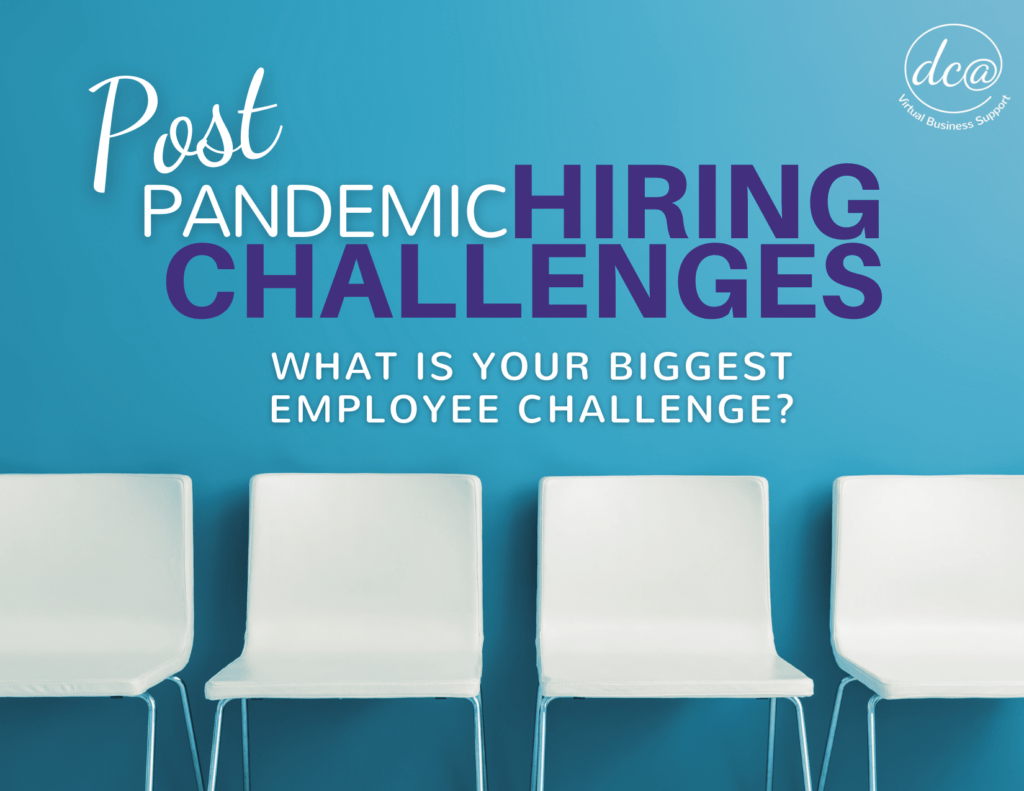
Facing Post Pandemic Hiring Challenges
As a business owner in this post-pandemic world, what is your biggest employee challenge? Hiring new talent? Or, retaining the talent you have?
According to the Bureau of Labor Statistics, employees left their current jobs at a rate of 2.7% in April. A historic rate! The quit rate is highest in the leisure and hospitality industries. So have patience my friend when you’re at a restaurant. They are all facing staffing shortages.
This employee turnover can have detrimental impacts on your business including loss of client satisfaction, loss of continuity, stress on team members who are left picking up the pieces, to name a few.
In the meantime, 9.3 million jobs have been left unfilled. Employers like Kings Dominion in Virginia raised starting wages 44% to attract seasonal employees. Citing the lack of foreign students to bolster its seasonal workforce, King’s Dominion has also cut back park hours. Public and private swimming pools are facing a similar shortage because foreign students make up a large percent of lifeguards. Some may not open in 2021 at all!
What’s Going On?
Experts theorize there are three factors at work. People are searching for more money, more flexibility, and more happiness. As Deanna Baumgardner, president at Employers Advantage LLC sees it: “Toxic work environments, poor treatment of employees by companies and managers, and antiquated policies, practices and work environments are what people hate.” During the pandemic, remote working had a profound impact on the way people began to think about where and how they want to work. For many people, work is no longer just about paying bills. Employees began looking for hybrid remote and office work models for balance, and where they are learning new skills or seeing an opportunity to advance their careers.
What Can Employers Do?
According to Rob Falzon, vice-chair of Prudential Financial, employee retention strategies need to focus on maintaining a strong company culture, to help employees feel connected in a remote environment. Because 68% of workers believe that an ideal workplace model allows them to split time between an office and a remote location, keeping the culture alive and remote employees connected is critical. To remain competitive during the pandemic, a number of technological adaptations were accelerated across many sectors and markets. This created a need for new skills. Employees feel they are either not learning new skills or are not seeing a way to advance within their companies, resulting in departures for advancement.
Strategies
Regardless of age or career bracket, employees are seeking jobs that pay well, have opportunities to learn, advance, and provide benefits that create a work-life balance. While considering future benefits, Falzon believes there needs to be clear internal paths to upskill or reskill and better opportunities for employee promotion. Employers need to be more accommodating and much more flexible. Keep these strategies in mind to help your company be its best and to retain or hire necessary talent.
As a business owner, what has your recent experience been recruiting or retaining talent? We’d love to hear from you!
